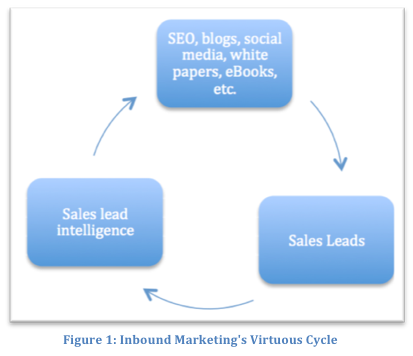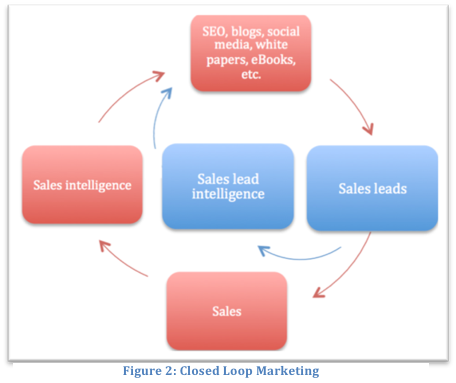Is Your Closed Loop Marketing Virtuous?
- Published in Demanding Views
The term “virtuous cycle” refers to any sequence of events whose end-result restarts the sequence of events all over again, ending this time in a better result, which restarts the cycle once again, and so on. Each result causes the cycle to repeat, leading to an even better result, indefinitely.
In lead generation, a virtuous cycle is a huge asset. Whatever process you employ, you of course want it to produce two things: 1) leads that are relatively easy to close, and 2) leads that, when they do close, will generate lots of money. But what’s even better is if, as a natural byproduct of generating those leads, you are automatically positioned to produce even better leads — leads that close easier and make more money than leads you already have — which in turn make it more likely that you’ll capture even better leads than those. And, so on, again, indefinitely.
But to be truly virtuous, lead generation can’t just encompass the marketing cycle; it also must encompass the sales cycle. That’s because it’s only after a sale actually closes that you really know just how easy it was to close and its cash value. Marketing needs that information so the lead generation process can benefit — assuming it is designed to leverage sales side information in the first place. That requires a marketing cycle that is itself inherently virtuous — i.e., where outcomes drive programming, which in turn drives even better outcomes for yet better programming, and so on. That’s called closed loop marketing.
Closed Loop By Definition
 Decisions about what to do with a lead are based on what you know about the lead. And the more you know about the lead, the better you are able to handle a lead at every stage — to target a prospect, to engage a prospect, to qualify or abandon a lead, and to close a lead. But you don’t just use lead information at each of these stages — you also hopefully gain lead information. That’s how virtuous marketing cycles work: Every stage produces information that strengthens your hand going into the next stage. And when you complete the last stage (close lead), you are in a much stronger position, in terms of lead intelligence, to go through the stages again.
Decisions about what to do with a lead are based on what you know about the lead. And the more you know about the lead, the better you are able to handle a lead at every stage — to target a prospect, to engage a prospect, to qualify or abandon a lead, and to close a lead. But you don’t just use lead information at each of these stages — you also hopefully gain lead information. That’s how virtuous marketing cycles work: Every stage produces information that strengthens your hand going into the next stage. And when you complete the last stage (close lead), you are in a much stronger position, in terms of lead intelligence, to go through the stages again.
This is a very natural pattern to fall into if you do inbound marketing, which is closed loop by definition. That’s because inbound marketing uses tactics like SEO, blogs and social networking — in other words, tools that produce content that produces actionable lead intelligence as the content is being consumed. And as more content is consumed, more intelligence is gained, which in turn helps marketers program better SEO, blog and social networking content to capture more and better leads (Figure 1).
As people subscribe to a newsletter, comment on a blog, frequent a web site or download a series of white papers, they qualify themselves as sales leads. They are volunteering by their behavior and by the information they provide in forms what it is about your content — and, by extension, your company — that gets them excited or does not get them excited. In a previous era you might only capture this intelligence in marketing research — usually well before or well after a marketing campaign was underway — rather than as an integrated piece of the campaign in real time. Such lead self-qualification produces better lead intelligence that marketers can apply without delay.
 Once this virtuous concept is adopted, the number and quality of sales leads become a function of just three variables:
Once this virtuous concept is adopted, the number and quality of sales leads become a function of just three variables:
- The amount of content you can publish;
- The richness of information you can gather; and
- The speed with which you can apply that information in new content.
In addition, much of this publishing and analysis work can be automated — providing a further speed advantage. Bringing sales “into the loop” (Figure 2) increases information richness since feedback from both marketing initiatives (blue arrow) and sales initiatives (red arrow) will count. Marketing teams can then fine tune campaigns in line with actual results as they happen. And sales teams can also be more effective since they now know which content drove (or did not drive) which leads. They may, for example, decide to call a sales lead that has just left a very favorable blog comment.
If the idea of a virtuous cycle sounds appealing, marketers should first make sure their lead outreach is self-informing — i.e., that good lead intelligence does not require a separate independent effort. Second, they must leverage as much of that information as possible — from both the sales and marketing sides.
Jeanne Hopkins is a digital and traditional marketing "mash up" and as Director of Marketing, has a ton of fun working with a fabulous team to generate 40,000-plus new leads each month for the HubSpot marketing software sales organization.

